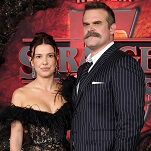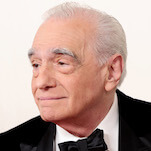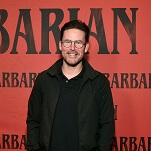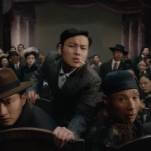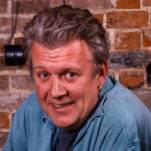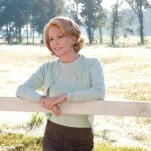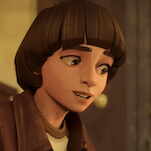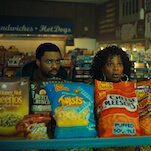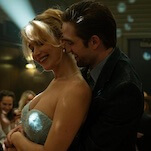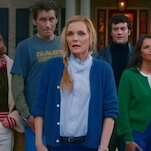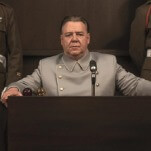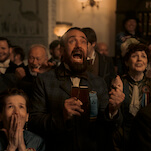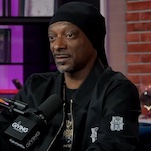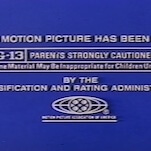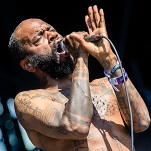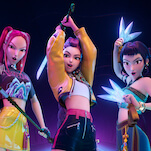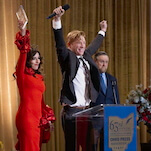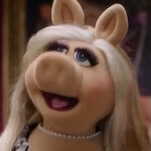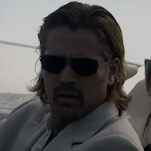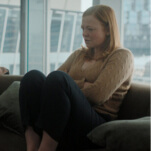How Dollhouse toyed with the idea of how people and institutions are formed
The blank page is a portal and a prison. Writers can call into existence anything that can be put into words, and through the miracle of revision, can make heinous mistakes that never survive beyond the first draft. That’s a tremendous power to wield. But there are also deadlines to meet and an audience to please, and the yawning gap between the spark of a great idea and the impossibility of rendering it even adequately, let alone excellently. Writers tend to be cocky enough to believe that they can take any assignment and “make it their own.” But writers also live inside their own heads, which means deep doubts creep through, like roots, cracking the foundation. Meanwhile, the blank page beckons, demanding to be filled.
When writer-producer-director Joss Whedon created Dollhouse, he was on something of a cold streak. Whedon’s breakthrough TV series, Buffy The Vampire Slayer, wrapped its seven-year run in 2003, followed a year later by the end of its spinoff, Angel, which had run for five seasons. In 2009, having been away from TV-producing for nearly five years, Whedon was still living in the shadow of a high-profile failure: the sci-fi Western series Firefly, which many Whedon fans felt to be his best work, but which suffered an early cancellation in part because of network mishandling. After an unsuccessful attempt to relaunch Firefly as a movie franchise in 2005, Whedon spent some time in the wilderness, his name attached to projects that stalled. Then he re-emerged with a left-field hit: the 2008 musical web series Dr. Horrible’s Sing-Along Blog. In interviews around that time, Whedon suggested that low-budget productions and alternative distribution models were his show-business future. He seemed eager—or at least resigned—to the thrilling, terrifying freedom of total independence, as opposed to working within a system that inherently distrusted the “personal stamp.” But first Whedon had unfinished business: a bit of redemption, via one more TV series, made for Fox, the net that strangled Firefly.
Whedon has said that Dollhouse was born of a conversation he had with Eliza Dushku, who played the rebellious vampire-slayer Faith on Buffy and Angel. Somewhere during a winding discussion about the lack of strong, diverse acting roles for women, and about the limited perspectives on human sexuality in modern American entertainment, Whedon and Dushku conceived of a TV series starring Dushku as a human “doll” named Echo, who regularly has her memories wiped and replaced by whatever personality and skill sets that paying clients require. That premise would allow Dushku to play a different character every week, and would let Whedon and his team of writers at Mutant Enemy Productions explore what men desire from women (and vice versa), as well as exploring what defines a person’s identity. Plus, at a time when the networks were seeking Lost-like buzz without complicated Lost-like serialized storytelling, the Dollhouse concept seemed an ideal way for Whedon to give the Fox executives what they wanted without losing his soul. From episode to episode, Dollhouse could be anything, but it would primarily be a show about attractive young men and women having sexy adventures. Surely it wouldn’t be too hard to find a sweet spot within that basic idea, between what the network was paying for and what Whedon really wanted to make.
As it turned out, compromise was very hard. Before the show even debuted, word leaked out that Fox was asking for Whedon to make it less dark, less backstory-heavy, and more action-packed—and that Fox was already juggling Whedon’s intended order for the episodes, and asking for an entirely new first episode, just as the network had done with Firefly. Prior to the airing of that new first episode in February of 2009, Whedon was interviewed by critic Alan Sepinwall, and said:
The mandate from the network was very much, “Give me a standalone where the audience knows what the structure of the show is, and where it ends so the audience wants to come back next week, but not just because you put out a carrot and they know they’re going to be chasing that carrot for six years.” And I agree with that. Some of the best stuff we’re doing with the show is arc stuff, but at the same time, if the adventure of the week isn’t compelling, and it’s just a string of compelling scenes where nothing is resolved—that kind of television frustrates me enormously. I’d say we want to do both. We want people to feel like they can watch it when they want to, week to week, or they can watch a 13-hour movie.
Instead, the TV audience chose not to watch at all—at least not in significant numbers. But that indifference ended up being a boon to Dollhouse, creatively. Initially, Dollhouse’s mix of breezy, offbeat capering and tortured soul-searching came across as too stilted. The premise itself didn’t make a lot of sense, because there were very few jobs (outside of “prostitute,” which Dollhouse tried not to overuse) where it made sense for a client to hire what the show called “actives.” Plus, Whedon’s career-long affection for eccentrics meant that the cast was populated by characters who were improbably bumbling and/or aggravating—the worst of which was the technical wizard Topher (played by Fran Kranz), whose scatterbrained behavior didn’t match his responsibility for programming and maintaining the highly expensive stock of the “Dollhouse.” The biggest problem, though, was that in their passive state, the actives were annoyingly blank, relying on “handlers” to take care of their basic needs while they muttered inanities about trying to be their “best” (like characters from the legendarily bad B-movie Parts: The Clonus Horror). It was hard to get invested in the heroes’ fate, and because Whedon had a five-year plan in mind for Dollhouse, the show was slow to define the true intentions of the Dollhouse or its parent company, the Rossum Corporation. In the words of the FX sitcom It’s Always Sunny In Philadelphia, Dollhouse’s case-of-the-week format evaded one essential question: “Who is this versus?”
That all changed once it was clear that Dollhouse was never going to become a phenomenon. Fox left the show alone, and it began to get stranger—and better. Then, because the sets were already built, and because Fox didn’t have much else in the pipeline, Dollhouse received a surprise renewal for a second season, predicated in part on the promise that Whedon’s team could keep costs down. So the semi-anthology format more or less went out the window in season two, replaced by an intricate master plot that dug into the secret history of the Rossum Corporation and its network of Dollhouses. The show got leaner too, with stories confined largely to the same few sets, with the same few actors, some of whom switched from hero to villain and back again, as a way of keeping the plot lively without having to pay for too many new characters.
Hence “The Left Hand,” an episode that would be difficult for any new Dollhouse viewers to drop in on and understand. “The Left Hand” continues a story about Rossum’s hidden agenda, involving a Washington D.C. branch of the Dollhouse and crusading Senator Daniel Perrin (played by Alexis Denisof, a Whedon regular who’d been on Buffy and Angel). In the previous episode, Perrin was revealed to be an active under Rossum’s control, which was a major twist, since Perrin had dedicated his career to exposing the Dollhouses. In “The Left Hand,” a “wiped” Perrin roams the D.C. area in a daze, alongside Echo, who’s also muddled. The Perrin character is in part a comment on political cynicism, and the idea that even powerful leaders are programmed by their own “handlers,” and are able to change platforms from campaign to campaign because voters only focus on the present, not the past or the future. But like the other dolls, Perrin is also a tragic figure who gave up a life of decadence to try and make a difference in the world, and now finds himself in a sham marriage with a woman who hates him. By the end of the episode, Perrin has been remotely activated as an assassin—a leap in the “imprinting” doll-tech essential to the series’ ultimate dystopian arc—and kills his wife Cindy, while a still-blank Echo tries to reassure him that Cindy’s merely “broken,” and that he bears no responsibility for what other people make him do.

